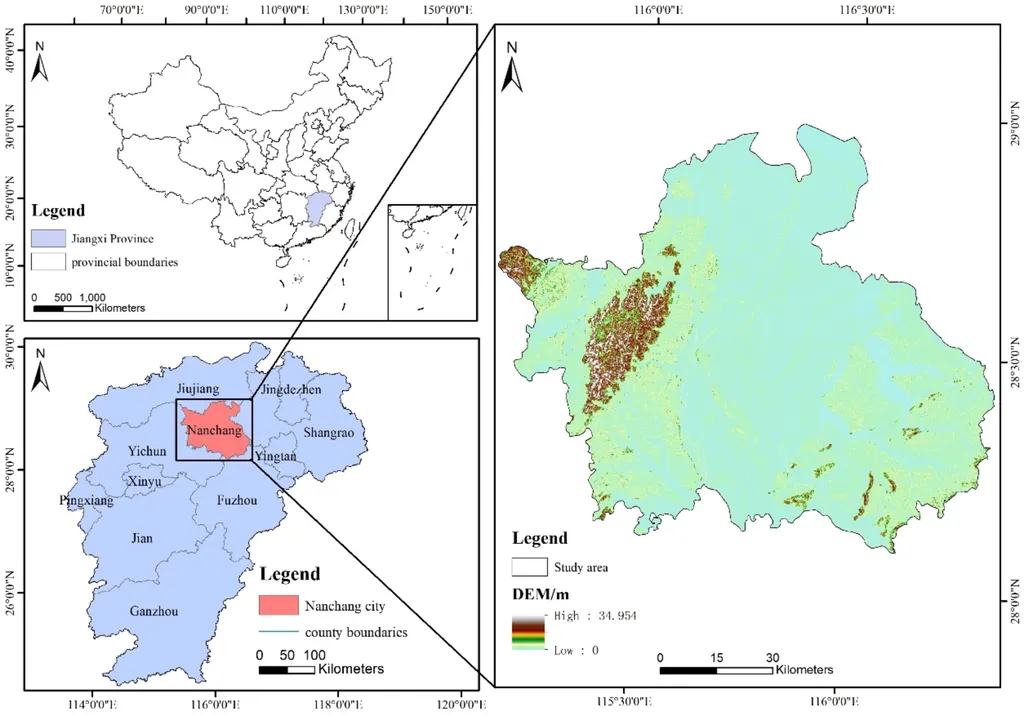In the heart of Southeast China, the city of Nanchang is undergoing a rapid transformation, and understanding the spatial impacts of this urban expansion is crucial for sustainable land-use planning. A recent study published in the journal SAGE Open, which translates to “Open Sage,” has shed light on the dynamics of land use in Nanchang, offering valuable insights for urban planners, developers, and the energy sector.
The research, led by Shuai Fu from the Key Laboratory of Water Recycling and Water Utilization in Arid Areas of Xinjiang at the Chinese Academy of Sciences, utilized multitemporal Landsat imagery spanning from 2005 to 2020. By employing spatial pattern analysis and CA-Markov modeling, Fu and his team projected land-use evolution, providing a systematic evaluation of land resource allocation in Nanchang.
The findings reveal significant changes in land use over the 15-year period. Woodland areas have been on a continuous decline, with a cumulative reduction of 300.27 square kilometers. Concurrently, unused land has been converted to construction and agricultural land uses, resulting in a proportional decrease. While both grassland and construction land demonstrated proportional increases, the expansion rate of construction land showed a marked acceleration.
“Understanding these dynamics is crucial for informing sustainable land-use planning strategies and facilitating coordinated socioeconomic development,” Fu emphasized.
The study also highlighted the influence of elevation slope on agricultural land, woodland, grassland, and water areas. Construction land, on the other hand, is greatly affected by the convenience of transportation, with old construction land serving as the initial boundary of expansion, driving the transformation of surrounding land use.
Looking ahead to 2035, the research predicts that agricultural land will remain largely stable, while woodland will slightly decrease. Both grassland and water areas are expected to show a decreasing trend, and construction land is projected to increase by 306.31 square kilometers.
For the energy sector, these findings are particularly relevant. As urban areas expand, the demand for energy infrastructure also grows. Understanding the spatial impacts of urban expansion can help energy companies plan for future needs, ensuring that infrastructure development aligns with sustainable land-use practices.
“Comprehensive understanding of land use dynamics in Nanchang provides critical insights for sustainable urban planning,” Fu noted. “The integration of developmental initiatives with ecological conservation constitutes a fundamental requirement for achieving sustainable land resource management and regional sustainable development.”
This research not only shapes future developments in urban planning but also underscores the importance of balancing economic growth with environmental sustainability. As cities continue to expand, the insights gained from this study will be invaluable for creating sustainable, resilient, and energy-efficient urban landscapes.

